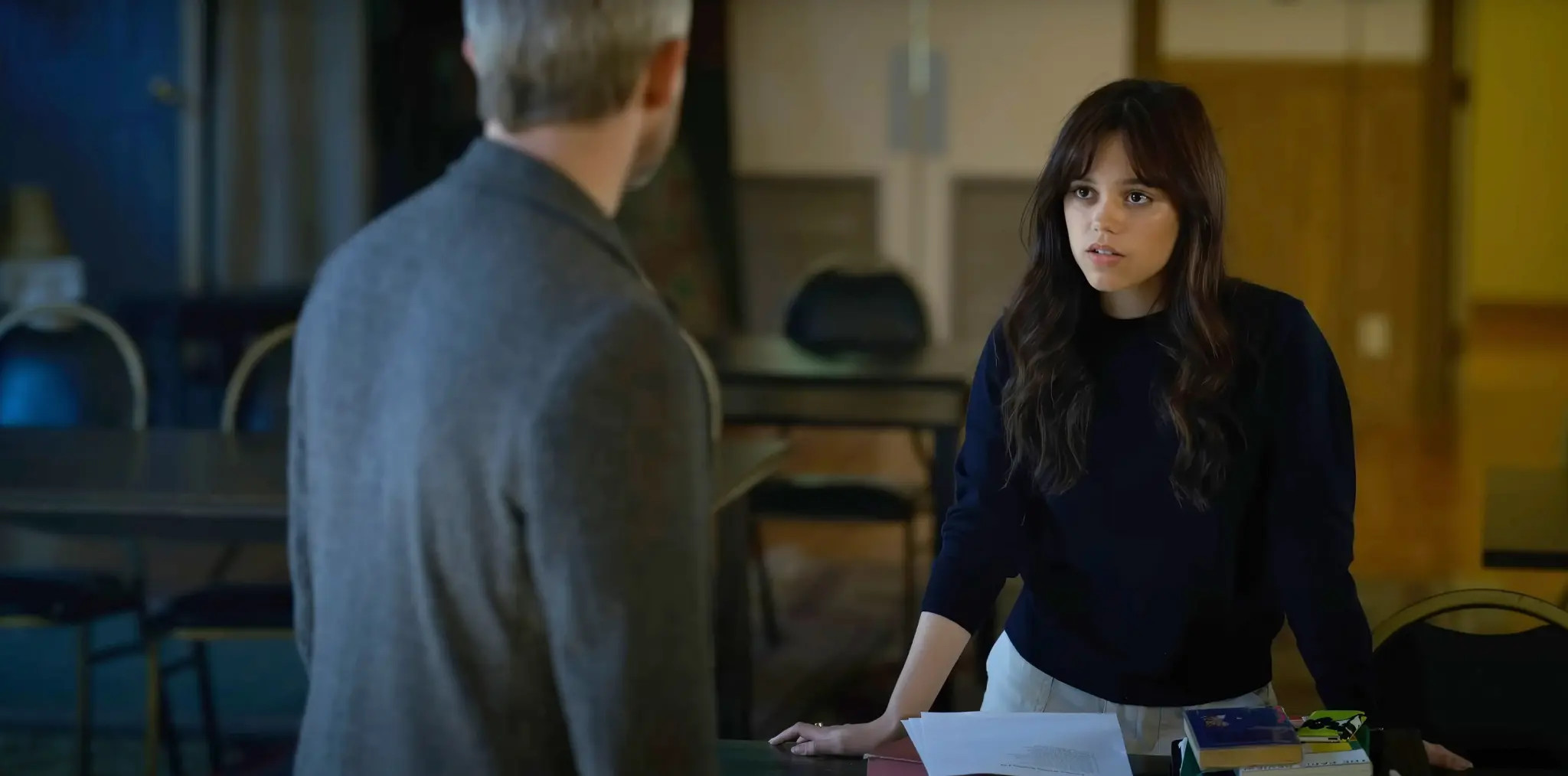The Controversy Surrounding Jenna Ortega’s Film ‘Miller’s Girl’
Jenna Ortega has once again found herself at the center of a media storm, this time due to the contentious nature of her new film, Miller’s Girl. The 22-year-old star, known for her candidness and strong opinions, has faced criticism and backlash over the age gap between her character and her co-star, Martin Freeman, in the film. This controversy has sparked discussions not only about the film’s themes but also about societal perceptions of such relationships in media. The dialogue has also highlighted the broader implications of how films tackle sensitive and potentially harmful narratives.

Understanding ‘Miller’s Girl’
Miller’s Girl, directed by Jade Halley Bartlett, was released in January 2024 and features a complex and uncomfortable narrative that centers around the relationship between an 18-year-old student, Cairo Sweet, played by Ortega, and her high school teacher, Jonathan Miller, portrayed by Freeman. The film is a daring exploration of an inappropriate teacher-student dynamic, which has inevitably raised eyebrows due to the significant 30-year age difference between the two characters.
This film’s premise is particularly provocative, as it dives deep into the psychological and emotional implications of such relationships. Critics have pointed out that in focusing on this dynamic, the film elicited a visceral response from audiences who often prefer to view such topics through a lens of moral clarity. Instead, Miller’s Girl chooses to plunge into the gray areas of such relationships, which can be deeply uncomfortable for viewers who might be more accustomed to clear-cut narratives.

The Backlash and Public Reaction
Following its premiere, Miller’s Girl faced a wave of criticism on various social media platforms. Viewers expressed discomfort with the film’s portrayal of an age-discrepant relationship. One user on X described the film as “so gross! So, so, so, so gross!” Another viewer criticized a specific scene, labeling it “the worst thing I’ve ever seen.” Such strong sentiments reflect a broader societal discomfort regarding the representation of relationships that blur ethical boundaries, particularly in the context of youth and authority.
The reactions have not been limited to mere personal sentiments; they mirror ongoing societal debates regarding the responsibility of filmmakers in representing sensitive issues. For instance, critics argue that while art should provoke thought, it must also navigate the responsibility that comes with depicting such potentially harmful dynamics. This debate has intensified as discussions surrounding consent, representation, and the ethical implications of storytelling continue to evolve in today’s society.

Jenna Ortega’s Response to Criticism
In an interview with Vanity Fair, Ortega addressed the backlash head-on. She stated, “It’s not supposed to be a comfortable movie. It’s supposed to be awful at times.” Her comments highlight a crucial aspect of artistic expression – that not all stories are meant to be palatable or easy to digest. Ortega emphasized that art can provoke discomfort and reflection, noting that “we all have f–ked up experiences at one point or another.” This perspective invites audiences to engage critically with the film rather than simply dismiss it based on its contentious subject matter.
Moreover, Ortega’s position reflects a growing trend among younger actors and filmmakers, who advocate for the exploration of complex and divisive issues in cinema. This willingness to engage in difficult conversations is essential in fostering a culture where uncomfortable truths can be examined rather than ignored. For many, Ortega’s approach signifies a shift towards a more nuanced understanding of storytelling as a dual process of expression and reflection.
Martin Freeman’s Defense of the Film
Martin Freeman also shared his thoughts on the matter, defending the film’s intent during an interview with The Times. He described Miller’s Girl as “grown-up and nuanced,” asserting that it does not glorify or romanticize the troubling dynamics at play. In his defense, Freeman pointed out the inconsistency in how audiences react to complex narratives, comparing the criticism directed at Miller’s Girl to questioning actors who portray morally ambiguous characters in historical dramas, such as Liam Neeson in Holocaust-themed films. This analogy underscores the importance of understanding the context and intention behind the storytelling.
Freeman’s perspective also opens a broader discussion about the moral obligations of filmmakers versus the expectations of audiences. As cinema continues to evolve, distinguishing between storytelling that challenges versus that which promotes harmful beliefs becomes crucial. Freeman’s assertions also invite audiences to appreciate art as a multi-faceted dialogue rather than a one-dimensional commentary.
Insights from the Film’s Intimacy Coordinator
Amidst the controversy, Kristina Arjona, the film’s intimacy coordinator, offered additional insight into the production process. She clarified that Jenna Ortega was fully aware of the nature of the scenes she was involved in and was comfortable throughout the filming. “There were many, many people throughout this process engaging with [Ortega] to make sure that it was consistent with what she was comfortable with,” Arjona explained in an interview with the Daily Mail. This statement aims to reassure audiences regarding the ethical considerations taken during production, emphasizing the use of modesty garments and other safeguards during intimate scenes to maintain appropriate boundaries.
This aspect of film production, often overlooked, plays a critical role in ensuring that actors can perform within a safe and respectful environment. The presence of an intimacy coordinator not only enhances the actor’s comfort level but also promotes ethical practices within the industry. Through such measures, filmmakers can address sensitive content with greater awareness, potentially easing audience apprehensions related to the portrayal of contentious narratives.
The Financial and Critical Reception of ‘Miller’s Girl’
Despite its bold narrative and capable cast, including Dagmara Domińczyk, Bashir Salahuddin, Gideon Adlon, and Christine Adams, Miller’s Girl has struggled at the box office. The film has garnered less than $900,000 worldwide against a production budget of $4 million, clearly indicating that its controversial subject matter has impacted its commercial viability. Furthermore, the film has received mixed reviews, with a dismal 29% critics score and a 42% audience score on Rotten Tomatoes, reflecting the polarized reception it has elicited from viewers and critics alike.
This dichotomy between creative ambition and financial success raises questions about the intersection of art and commerce. The film’s lackluster performance could signify a reticence among audiences to engage with narratives that challenge societal norms, particularly those surrounding authority and consent. In this context, Miller’s Girl serves as a case study for the complexities of storytelling in contemporary cinema, where themes related to power dynamics invite scrutiny and debate from diverse audience segments.

















